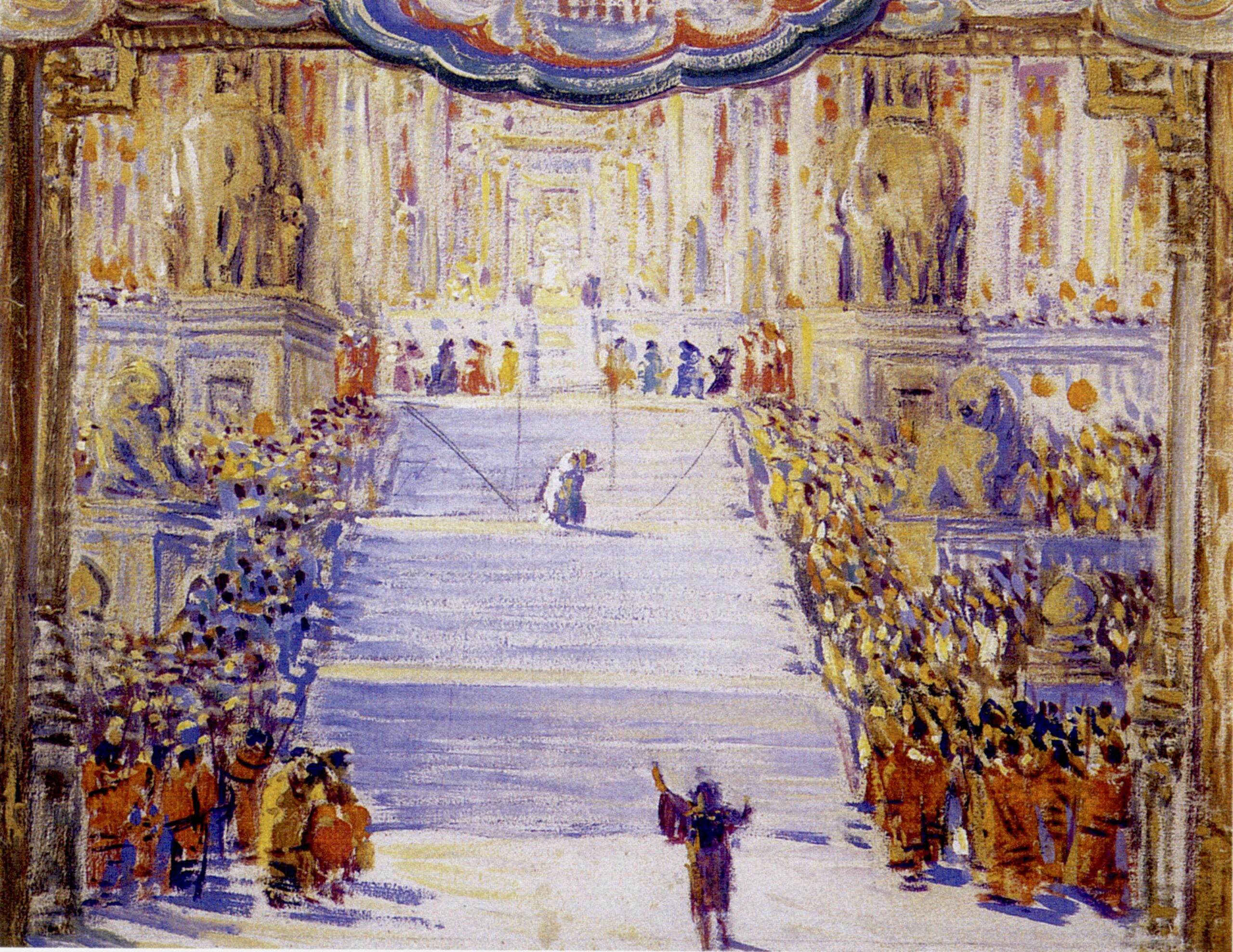Turandot, the dream of Galileo Chini and Giacomo Puccini

Galileo Chini created the stage designs for the Turandot opera by Giacomo Puccini between 1924 and 1925. These scenographies were strongly influenced by his memories of his long sojourn in Siam, from 1911 to 1913, when the King of Siam Rama V has called him to decorate the Ananta Samakhom Throne Hall, a grand new palace for his Throne. And it was because of Chini’s ties to the Orient, that Puccini wanted him by his side for Turandot.
Taken from a dramatic fairy tale by Carlo Gozzi, an 18th c. Venetian author, and set in a fantastical China, Turandot was a very tormented creation. Puccini worked on it from 1920 until his death on 29 November 1924 in Brussels. In it Puccini combined the sounds of the Italian opera tradition with the new tonal research of the time (there are references to Debussy and Stravinsky), together with the search for exotic musical motifs that could evoke the ancient East. For this purpose he also used the sounds of a Siamese bass xylophone, specially reproduced from a specimen that Chini had brought back to Italy.
Chini and Puccini began collaboration on Turandot in early 1924, and it was easy for Chini to understand what the opera needed. In May of 1924, Puccini writes from Viareggio to the directors of Casa Musicale Ricordi Valcarenghi and Clausetti: “Friday Chini will come to you with the scene sketches. I think all is well…”
Chini executed his ideas for the three acts with five paintings in various versions: the sketches are of great beauty, painted spontaneously and perfectly in tune with the story to be told, extremely evocative and essential to the music.
The opera was supposed to debut in 1925, but Puccini’s sudden death on November 29, 1924 in Brussels, delayed it until the spring of 1926. In January 1926 Chini set to work in the large scenography halls above the Scala stage, assisted by Giovanni Magnone.
The theater had been recently renovated installing better lighting of over 400 lamps with 2000 candles; moreover the “Fortuny Dome” had been installed, a particular lighting device invented by Mariano Fortuny, that allowed for gradual or rapid changes in lighting, with the possibility of blending colored lights reaching almost pictorial effects, and Chini took full advantage of its potential to make his set designs all the more suggestive.
Newspaper chronicles of the time tell us that the evening of April 25 at the Scala was full of great expectation for an exceptional event. It was opening night for Turandot, Puccini’s last unfinished opera, completed and directed by Arturo Toscanini, and the evening was memorable in every way: for the splendid sound score, for the story represented, for the magnificent stage sets in perfect harmony with the music and for the gorgeous costumes created by Caramba with Chini’s guidance, that were used only for the performances at the Scala.
Beyond the exceptional artistic value of the performance, the evening then remained in history for the emotion that caught everyone present when Toscanini, after the death of Liù, interrupted the music and turned to face the audience, and said in a voice broken with emotion: “Here the opera terminates, left incomplete by the author’s death.”
Correggi italiano Throne